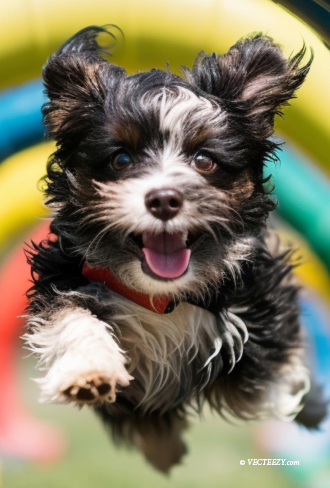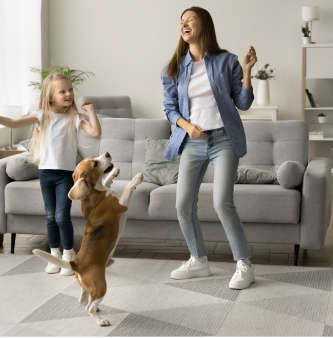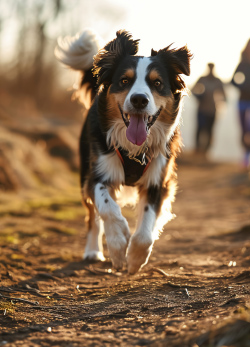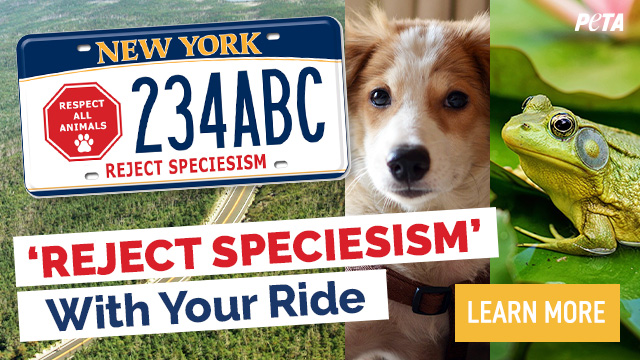Winter Into Spring Training Tips & Tricks For Your Dog
Here we are, embarking on Spring which can bring the most unpredictable weather. Seasonal changes can be tough for us dog owners, especially when transitioning from salt and snow to warm, spring days. If you have a pooch that hates the winter weather and is hesitant to venture outside, here are some nifty training tools to help turn your apartment into a playground for your dog!

Beat the winter weather struggle with toys, occupiers and games that will stimulate and exercise your dog inside the home. Play that is more structured and has rules can encourage “canine manners” and build a stronger bond between owner and dog. Think outside of the box (beyond the usual bully stick or game of fetch) to create ways to mentally and physically exercise a pooch that does not want to go outside.
Think like a trainer! One fantastic way to work your pupper’s brain without being able to actually go anywhere is to teach them something. Most dogs LOVE to work...for the right reward! The following are some examples of commands that can be turned into a game on a rainy or snowy day, with a little creativity: CHASE, DIG, DROP IT, FIND IT, FETCH, PAW, HIDE AND SEEK, ROLL OVER, SPIN, CRAWL UNDER, JUMP OVER/ THROUGH
Here are some of my favorite “Brain Games” for your pooches:
· FIND THE TOY or TREAT - Fill a basket with toys, placing the dog’s favorite at the bottom where they’ll have to search for it and dig it out…OR…place a treat under a towel or beneath the dog’s bed so they’ll have to dig it out. This simulates the nose and brain to search and hunt for the item or treat. Snuffle mats are good for this too.
· HIDE AND SEEK - Put your dog in a SIT and STAY command, then walk into another room while hiding behind a door or piece of furniture, then call your dog’s name and have them search for you. If they don’t have a strong STAY command, alternatively you can toss a treat away from you for your dog to find and then run into another room and hide and call them. This also helps build in the COME/RECALL behavior.
· SPIN - is a command that teaches your dog to go round in circles and this is especially good for high energy party animal dogs. It is also a functional command for dogs with dirty or wet feet. Spin performed on top of a towel helps clean off their feet. Place a high value treat in front of the dog’s nose and move it around to the side of the dog’s body in a slow and exaggerated movement. They will follow the lure with their head and nose and then the body should follow to complete the circle. Some dogs favor one direction over another so try both and see which they prefer. Maybe your pup can do both!

You could also pick up a few High IQ Occupiers such as interactive puzzle games, snuffle mats, licky mats, and Busy Buddy’s Twist n’ Treat or Tug-a-Jug. Indoor tunnels, hula hoops and small agility courses can be fun for pups AND humans if you’ve got the space!
Genetics, early socialization, and environment all impact and shape a dog’s playstyle. Certain breeds are more inclined toward running, jumping and chasing while others may love to dig and chew…so don’t be afraid to get innovative and have fun exploring your pup’s talents based on their natural instincts…so play on :)
In addition to indoor play training, don’t forget to turn cold-weather walks into innovative ‘command training’ opportunities. Instead of just grabbing that leash and harness and shuffling out the door, pick up your energy and make it fun! Bring your dog’s favorite treats along and let class begin. Here are some tips and tricks for turning humdrum into a fun walk!!
On a training walk, any pause is a moment for practice. The elevator is the ideal opportunity to work on LOOK, SIT and STAY. If you’re still building self-control in your dog, step on their leash with enough room for them to comfortably complete the commands but not enough to jump on fellow occupants.
Another way to occupy your time in the elevator is to do Doggy Push-ups, alternating the SIT and DOWN commands repeatedly. This is very useful for the high energy pooch that lives on the 34th floor. Impress your neighbors by showing them that your dog works out AND is well-behaved while doing it!

Using moments of downtime to engage your dog’s focus helps to engage their brain positively…and where there’s positive engagement, there’s no room for negative energy.
If your dog is a worker bee, why not view the city or town as their personal parkour course? That park bench isn’t just a place to sit, it’s a platform to teach ON and OFF commands and to GO UNDER, making this a full exercise routine.
If your dog isn’t much of a worker, you can implement the Red light, Green Light game. Walking fast, (green light). Then STOP abruptly (red light). See if they stop alongside you. This is an exhilarating game to make the act of simply moving forward more exciting, and it teaches your dog to be in sync with you.
Use the LET’S GO command to cue your dog to begin walking alongside you. Take care of the potty business, then the work can begin.
When you stop, say STOP. Pooch should stop with you and look at you. If they don’t, use your LOOK AT ME command to get your pup’s focus. They will eventually learn to stop and look at you automatically when you stop.
Halted at a red light? There’s another opportunity for practice. While you wait for the light to change, use that time to work on your SIT and WAIT command. Then say OK to release.
Every part of your outing is an opportunity to engage with your dog further building your bond. The more fun you make the training process for your dog, the easier it is to reduce challenges and find mutual respect. What I like to call “Cooperation Training.”
This is especially useful once you have passed the training benchmarks and want your dog to continue learning. Play training also reduces stress, fear and aggression in both people and dogs.
As a Dog Trainer, my goal is to build a bond between you and your dog with fun and innovative ways that are aligned and designed for both ends of the leash.







